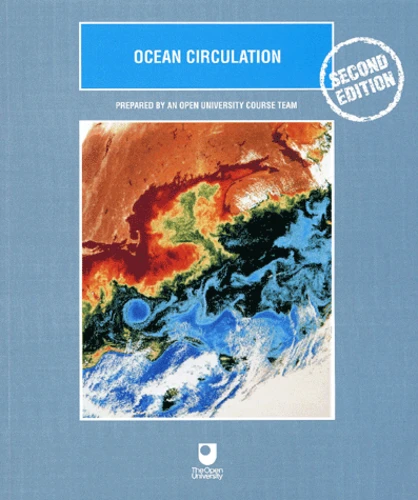Ocean Circulation.. 2nd edition
Par : ,Formats :
Actuellement indisponible
Cet article est actuellement indisponible, il ne peut pas être commandé sur notre site pour le moment. Nous vous invitons à vous inscrire à l'alerte disponibilité, vous recevrez un e-mail dès que cet ouvrage sera à nouveau disponible.
- Nombre de pages286
- PrésentationBroché
- Poids0.945 kg
- Dimensions21,0 cm × 25,5 cm × 1,8 cm
- ISBN0-7506-5278-0
- EAN9780750652780
- Date de parution17/09/2001
- ÉditeurElsevier Butterworth-Heinemann
Résumé
Extensively revised and updated for its second edition, this Volume belongs to a series on oceanography. It is designed so that it can be read on its own or studied as part of the Open University third-level course, S330 Oceanography. The first two Chapters outline the causes of circulation patterns in the atmosphere and oceans, emphasizing the interactions between them. Chapter 3 deals with surface circulation (including mesoscale eddies), using a minimum of mathematics. Chapter 4 reviews ideas about ocean circulation (with special reference to the North Atlantic gyre), and Chapter 5 describes major current systems at high and low latitudes, including climatic oscillations such as El Niño. Global fluxes of heat and freshwater, and the formation of sub-surface water masses, are the themes of the final Chapter.
Extensively revised and updated for its second edition, this Volume belongs to a series on oceanography. It is designed so that it can be read on its own or studied as part of the Open University third-level course, S330 Oceanography. The first two Chapters outline the causes of circulation patterns in the atmosphere and oceans, emphasizing the interactions between them. Chapter 3 deals with surface circulation (including mesoscale eddies), using a minimum of mathematics. Chapter 4 reviews ideas about ocean circulation (with special reference to the North Atlantic gyre), and Chapter 5 describes major current systems at high and low latitudes, including climatic oscillations such as El Niño. Global fluxes of heat and freshwater, and the formation of sub-surface water masses, are the themes of the final Chapter.

